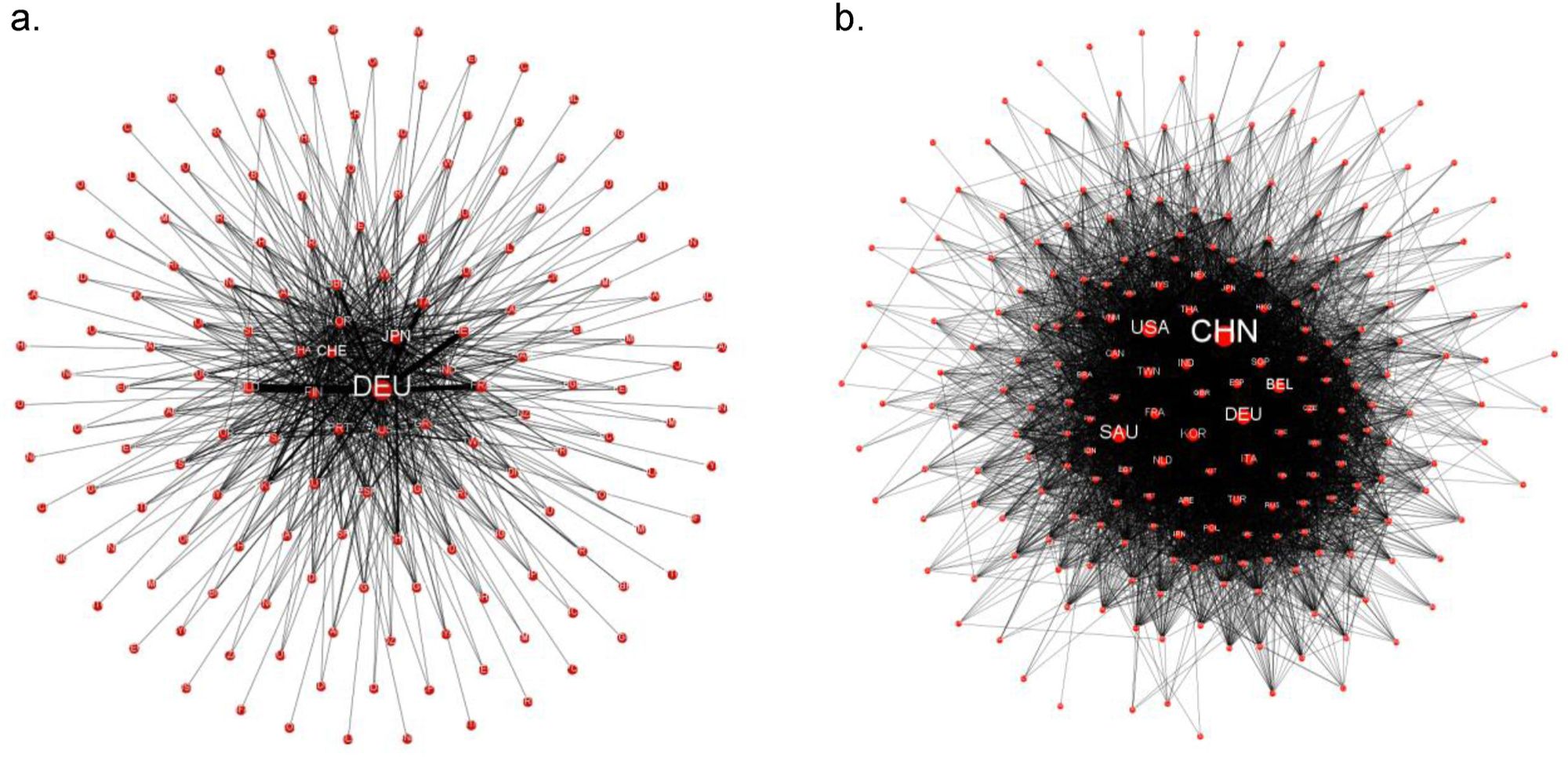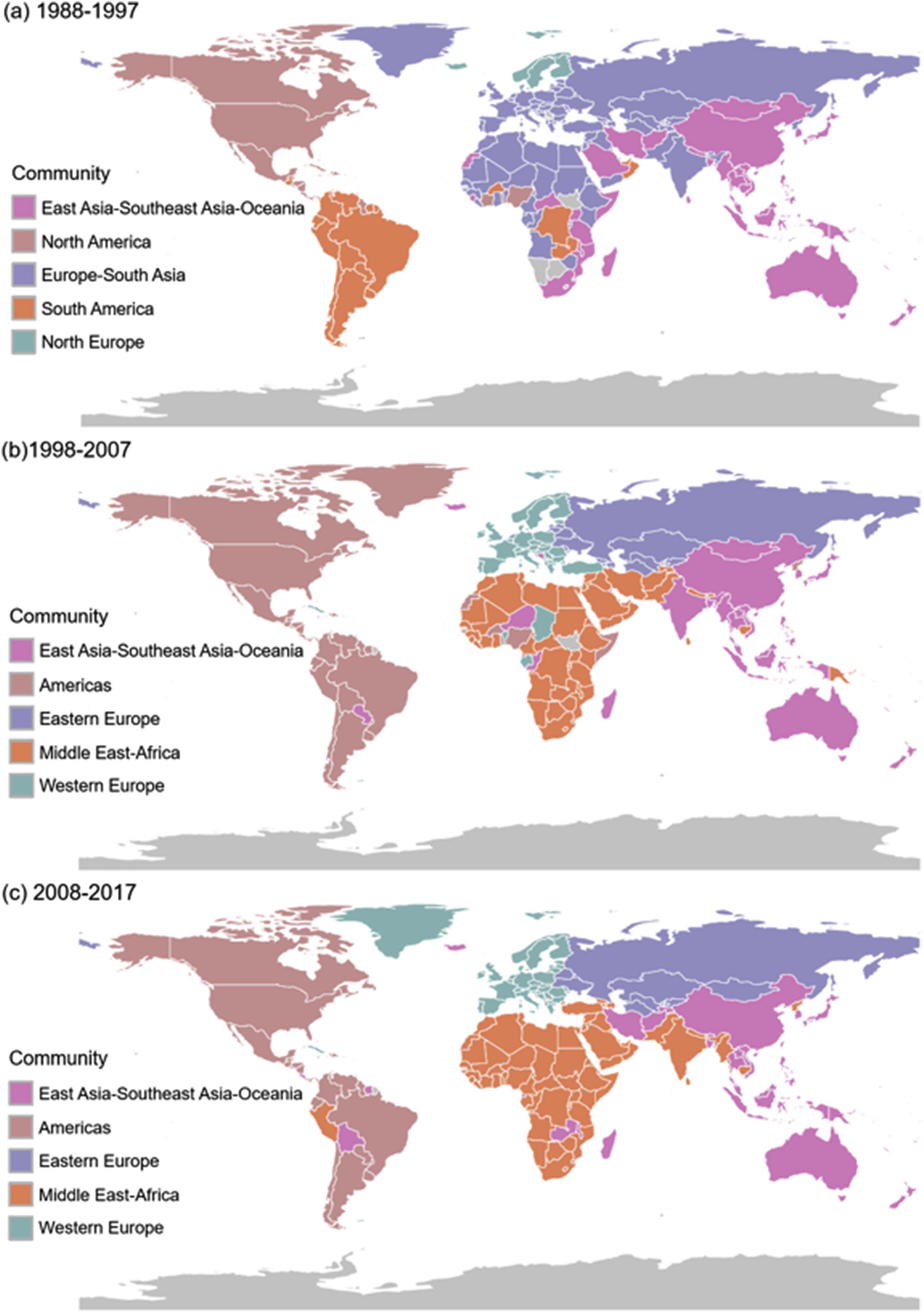Ren, Yanan; Liu, Guangxin; Pu, Guangying; Chen, Yimeng; Chen, Wei-Qiang*; Shi, Lei
Journal of Cleaner Production 2020 276, 124221. DOI: 10.1016/j.jclepro.2020.124221
Abstract
Plastics are the paradigmatic material of the current era. Plastics’ trade articulates interest in trading partnerships and concerns about trade security. We focus on the International Plastic Resin Trade Network (IPRTN) and analyze its spatiotemporal evolution in 1988–2017 from global, regional, and national scales. As a profile of globalization, the network became increasingly interconnected under the combined effect of the involvement of more participating countries, the increase in the closeness of trade links, and the increase in trade volume, which grew by 0.4-fold, 7.7-fold, and 14.9-fold, respectively. Despite the growth, IPRTN maintained fairly stable topological characteristics including small-world property (average path length, 1.95 ± 0.10; clustering coefficient, 0.63 ± 0.06), high reciprocity (reciprocity value, 0.54 ± 0.03), disassortative mixing (assortativity value, −0.46 ± 0.23), and exponential degree distribution. Generally, the plastic resin trade was spatially heterogeneous with high intra-regional trade proportions (1988–1997, 78.4%; 1998–2007, 79.9%; 2008–2017, 75.1%), and Europe, Asia, and North America were the dominating regions. These facts brought IPRTN with a regionally dependent community structure. Five communities were finally formed: the Middle East-Africa community, the Eastern Europe community, the Western Europe community, the Americas community, and the East Asia-Southeast Asia-Oceania community. We found that the US-China plastic resin trade was mainly complementary. Thus, mutual tariffs in the US-China trade war, which covers plastic resins, will cause adverse effects and need to be resolved through active consultations. To ensure trade security, we remind countries with poor trade robustness to pay attention to changes in trade policies of these critical trade players and to enrich trade channels.
IPRTN in 1988 (a) and 2017 (b).

Evolution of IPRTN’s community structure. The same color marks countries in the same community.
